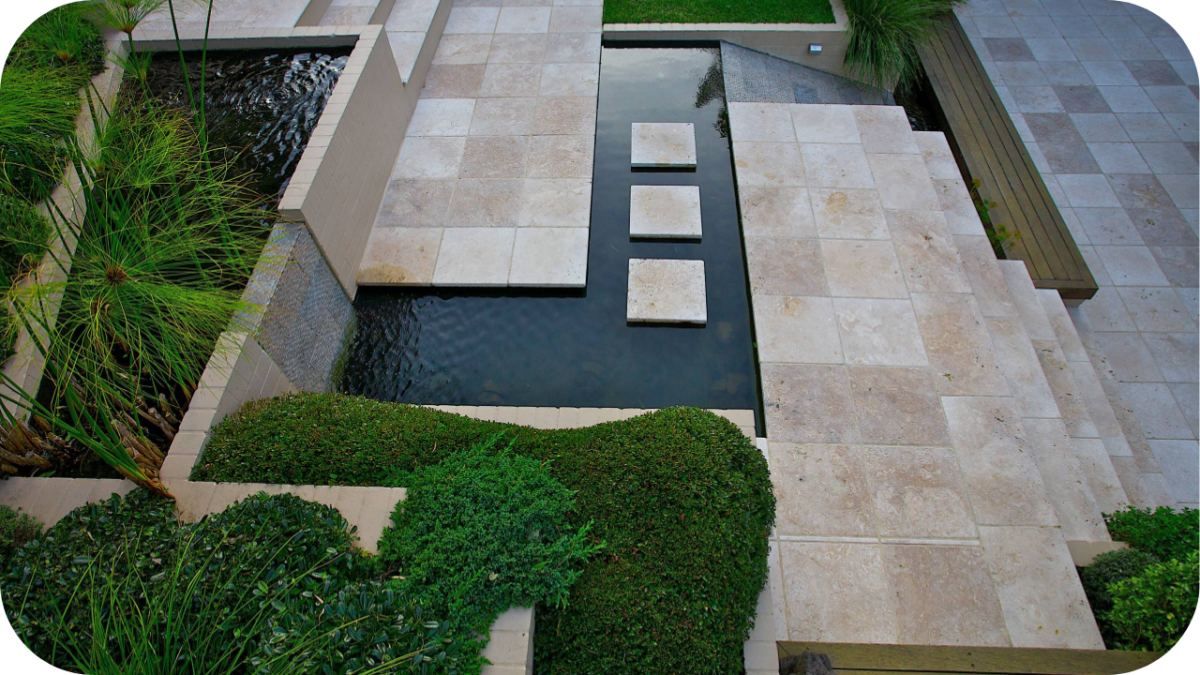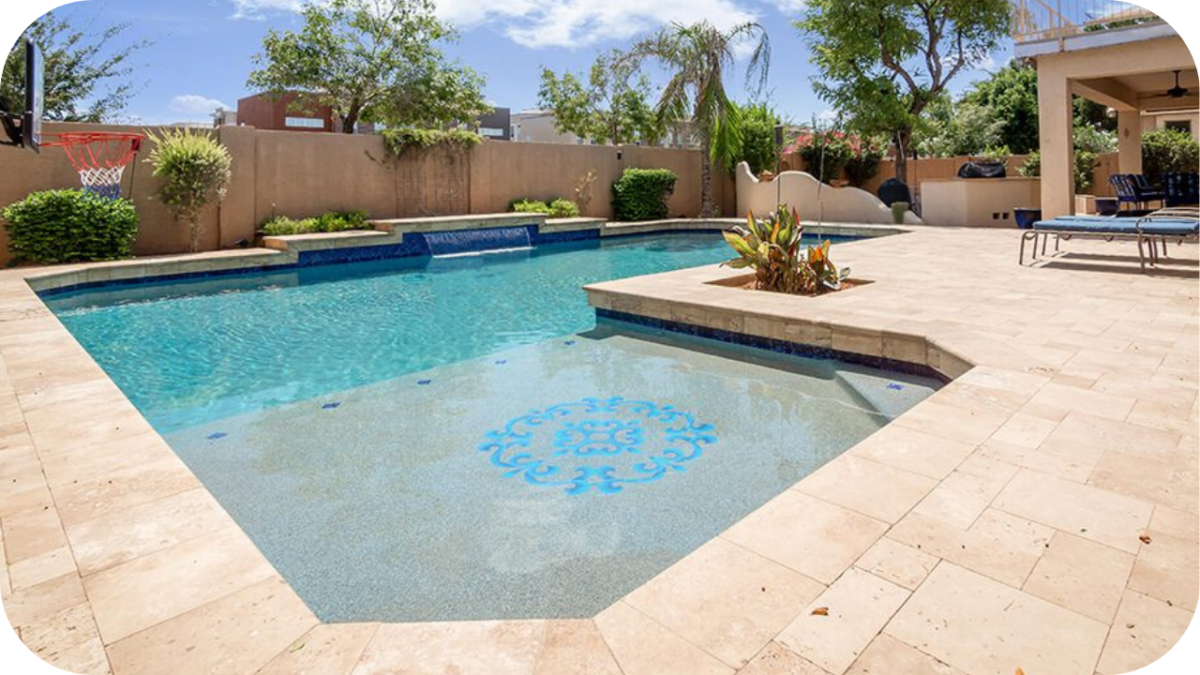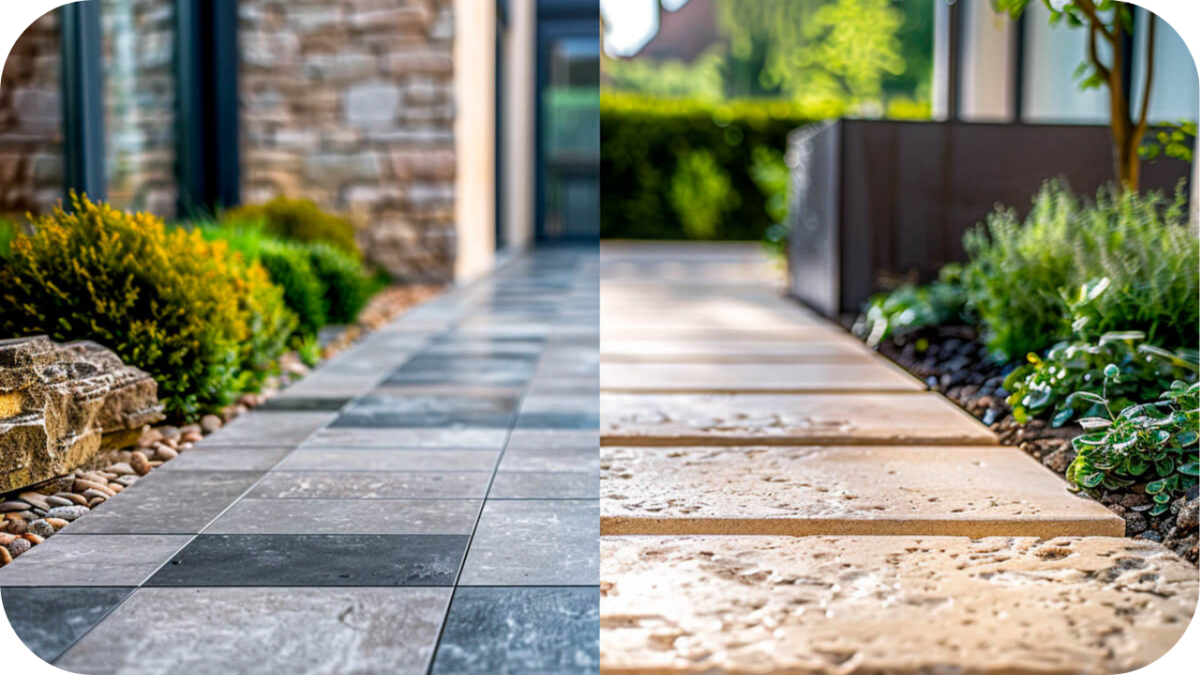Landscape Projects That Shine with Travertine Pavers
Travertine pavers continue to be a standout choice for Australian landscapes. Their soft, natural tones, cool touch underfoot, and safe, textured surfaces make them perfect for everything from pool areas to alfresco courtyards.
The stone’s organic finish adds warmth and character while standing up well to outdoor conditions and daily use. Whether you’re working with classic or contemporary styles, travertine helps create outdoor spaces that feel both refined and relaxed.
In this guide, we look at the landscape applications where travertine truly shines and how to use it effectively.
What Makes Travertine Ideal for Landscaping?
Travertine brings a natural warmth and sophistication to outdoor areas, making it a favourite among designers and homeowners alike.
Its subtle veining and earth-toned colours blend effortlessly with surrounding materials such as timber, native plants, and architectural stonework. The stone remains cool to the touch even in full sun, providing barefoot comfort around pools and patios.
Textured finishes like tumbled and brushed offer added stability underfoot, especially in damp or high-traffic zones. Travertine also holds up well against the elements, withstanding temperature fluctuations and wear over time.
With a wide range of finishes, including honed, unpolished, and brushed, it easily adapts to modern, rustic, and coastal garden styles, making it a practical and versatile landscaping choice.
Key Travertine Features Relevant to Landscape Design
To choose stone that works beautifully in real-world landscapes, it helps to understand the material’s practical benefits. These travertine features support both form and function outdoors.
- Porosity: Travertine’s natural porosity allows the surface to breathe, which helps regulate temperature and minimise heat retention. This feature makes it more comfortable underfoot during hot Australian summers.
- Neutral colour palette: With soft creams, beiges, and greys, travertine complements a wide range of materials. It pairs effortlessly with timber, garden greenery, and feature walls in modern or classic garden settings.
- Modular formats: Available in rectangles, French patterns, and custom cuts, travertine allows for flexible layouts. These formats streamline installation and are ideal for larger open spaces with repeating elements.
- Low maintenance: When properly sealed, travertine is easy to clean and resistant to surface damage. Its finish ages gracefully outdoors, reducing the need for frequent repairs or intensive upkeep.
- Textured surface options: Finishes like tumbled or brushed provide extra surface grip and a relaxed, organic look. These textures help define pathways, terraces, and other areas designed for frequent foot traffic.
Best Landscape Projects That Benefit from Travertine Pavers
To get the best out of travertine, it helps to match the stone with the right application. These landscape settings bring out its natural beauty and functional strengths.
1. Pool Surrounds and Pool Decking
Travertine works brilliantly around pools, offering a surface that remains comfortable underfoot even on hot days. Silver travertine pavers, with their layered grey tones and textured finish, create a refined, glare-free space that complements water features.
2. Courtyards and Alfresco Dining Areas
Courtyards thrive on pattern and tone. Classic travertine pavers, with soft beige and honey hues, add understated elegance to outdoor dining zones. Their French pattern layout brings structure and warmth to open-air entertaining spaces.
3. Garden Paths and Walkways
Curved garden paths benefit from the organic feel of Ivory travertine pavers. Their warm cream tones and natural finish pair beautifully with greenery, offering soft contrast and a gentle walking surface throughout landscaped beds.
4. Entryways and Front Garden Zones
Travertine makes a lasting impression at the front of a home. Cashmere travertine pavers, in creamy beige tones and a lightly textured finish, blend effortlessly with architectural stone, timber cladding, or planted borders.
5. Feature Patios and Fire Pit Areas
Around fire features, travertine delivers lasting appeal. Classic travertine pavers in modular or curved layouts resist heat and bring a timeless, relaxed feel to outdoor entertaining spaces centred around fire or lounge zones.
6. Terraced Garden Levels
On elevated garden spaces with steps or retaining walls, travertine creates unity. Ivory or Cashmere travertine in modular formats ensures colour consistency, smooth transitions, and a warm look that softens hard structural lines.
Design Tips for Using Travertine in Landscapes
To make the most of travertine in outdoor spaces, the right design choices matter. These practical tips will help you balance beauty, longevity, and layout simplicity.
1. Stick to neutral, earthy tones for long-term style
Choosing colours like ivory, beige, or soft grey ensures your landscape remains relevant over time. These tones work with a wide range of styles, materials, planting schemes, and architectural finishes.
2. Use French patterns in large, open spaces
French pattern layouts help avoid visual repetition across wide surfaces. Their multi-size arrangement introduces texture and rhythm, making them ideal for patios, courtyards, and larger entertainment zones with minimal detailing.
3. Combine tumbled pavers with greenery and gravel
Tumbled travertine offers a weathered, natural finish that pairs beautifully with surrounding greenery and gravel. This creates a relaxed, organic look that suits garden paths, transitional zones, or soft planting borders.
4. Consider sealing in shaded or damp areas
Shaded areas often hold moisture longer. Sealing travertine in these zones protects against mildew, staining, and darkening, helping maintain a cleaner, brighter finish with less frequent upkeep or surface treatment.
5. Soften hard edges with curved layouts or insets
Breaking up straight lines with curves, planter cut-outs, or insets adds softness to the layout. This helps the paving integrate naturally with garden beds, walls, and other landscape elements.
Maintenance Guidelines for Outdoor Travertine
To keep travertine looking its best outdoors, simple routine care goes a long way. These maintenance practices will help preserve both the appearance and performance of your stone.
- Sweep regularly to prevent debris build-up: Remove leaves, dust, and loose dirt to avoid surface staining and early wear. Routine sweeping helps maintain a clean appearance and prevents debris from settling in joints.
- Clean with pH-neutral stone cleaners: Use only pH-balanced cleaners designed for natural stone. Avoid acidic or bleach-based products that can dull the finish or cause long-term surface degradation.
- Seal every few years to maintain colour: Reapply a penetrating sealer every two to three years to protect the stone. This helps resist moisture absorption, staining, and fading from UV exposure.
- Address any moss or mildew early: In shaded or damp spots, moss and mildew can develop. Use a stone-safe solution to remove it quickly and prevent discolouration or surface damage over time.
- Use soft brushes or mops for cleaning: Avoid metal tools or harsh scrubbers that may scratch the surface. A soft-bristle broom or mop is ideal for regular maintenance and general cleaning.
- Rinse thoroughly after product use: After applying any cleaner or treatment, rinse the surface thoroughly with clean water. This prevents residue build-up and keeps the stone’s natural look intact.
Conclusion
Travertine pavers offer a perfect balance of natural beauty, comfort, and outdoor performance. Whether you’re designing a poolside retreat, a garden path, or a welcoming courtyard, this versatile stone adapts effortlessly to your vision.
With proper design and maintenance, travertine will continue to enhance your landscape for years to come. Contact Splendour in Stone to find the right travertine solution for your next project.

















